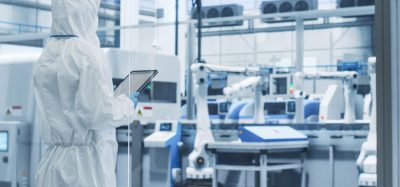Computer programme that could bypass patents to produce synthetic drugs
Posted: 18 January 2019 | Iqra Farooq (European Pharmaceutical Review) | No comments yet
Software that can bypass current intellectual property and design medication with the same function as top drugs could help pharma companies…


Researchers in Poland and South Korea have developed a computerised method that could be used to synthetically produce essential drugs, bypassing patent-protection.
In the global industry, some of the best kept secrets are those necessary to make life-saving medication and other pharmaceutical products.
“When we started this project, I was somewhat sceptical that the machine would find any viable synthetic alternatives – after all, these are blockbuster drugs worth gazillions of dollars, and I was sure that the respective companies had covered the patent space so densely that no loopholes remained,” said Professor of Chemistry at the Ulsan National Institute of Science and Technology (South Korea) and the Polish Academy of Sciences, Dr Bartosz Grzybowski.
“It turns out that the loopholes are there, and we can find new retrosynthetic pathways that circumvent the patents entirely.”
Dr Grzybowski is also the lead developer of the organic synthesis software Chematica.
These pharmaceutical patents protect the intellectual property of the company, and also ensure that competitors are prevented from using some synthetic solutions. These are ones that are usually developed by researchers to increase the purity of the final drug product, maximise its yield and reduce costs associated with it. The process is ordinarily painstakingly slow and time consuming, with a team of scientists conducting experiment after experiment to get to the final product.
To overcome patents in place, the research team ‘froze’ the challenging portions of each target molecule, which forced the computer to substitute unconventional but chemically plausible molecules on the basis of mechanistic rules.
The researchers tested their computer software using some significant commercial medication; linezolid, sitagliptin and panobinostat. Linezolid is a last-resort antibiotic, sitagliptin is an antidiabetic medication and panobinostat is a multiple myloma medication. Each of the drug had different difficulties with regard to their chemical composition.
When the computer programme was allowed to run without constraints, it recommended the commercial structure and synthesis. However, when the researchers designated some atoms and bond as untouchable, the programme proposed plans that avoided the patented ones.
“By algorithmically locating the key bonds on which patents hinge and propagating them down Chematica’s retrosynthetic trees, we can generate synthetic solutions from alternative yet economical starting materials, achieving a real practical impact,” Prof Grzybowski said.
The ability of the software to ‘dodge’ patents may lead to chemists changing the way they approach patent law and intellectual property.
The research team hope that their software could help pharmaceutical companies in the protection of their intellectual property, and to hasten research into organic chemistry.
“This work illustrates the benefits of pushing chemists to think algorithmically and asking computer scientists to grasp key chemical concepts, delivering chemical artificial intelligence results that matter beyond the confines of academia,” adds co-author Dr Piotr Dittwald, a research fellow with training in mathematics and computer science.
The study was published in the journal Cell.
Related topics
Drug Development, Manufacturing, Regulation & Legislation, Research & Development (R&D)
Related organisations
Polish Academy of Sciences, Ulsan National Institute of Science and Technology









